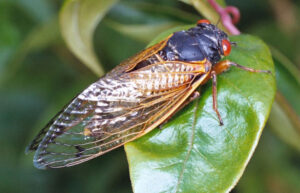Hollywood scriptwriters and James Bond films would have you believe that piranhas are up there with sharks as among the most dangerous aquatic creatures on earth. But is it true that within seconds of meeting them in the water, you will be reduced to a gleaming pile of bones?

White-bellied piranha.
Piranhas are indigenous to the Amazon basin, and incidents do occur every year. In 2011, a series of attacks left 100 people injured; in 2012, a young girl died after her canoe capsized in the Amazon and she was eaten by piranhas.
On December 26, 2013, a massive piranha attack left 70 injured in Argentina. Witnesses said thousands of swimmers in the Paraná River suddenly started getting bitten on their feet and legs. Medical officers at the scene said the fish were “very aggressive” and that “some people had bits of flesh torn from them”. However, they also said this was an exceptional event, and that unusually warm weather had driven the fish into the area.
Then on February 16, 2016, piranhas injured over 50 people in Brazil. Earlier that yeaar, swimmers in Brazil were being warned to stay out of the water following frequent piranha attacks on beaches in Palmas and the San Francisco River. Regional biologists said that the unusually high numbers of piranhas might have been linked to recent droughts, which affected food supplies.
Yet among all of these horror stories, many bathe unscathed in the waters of South America. In 2007, Martin Strel claimed to have swum the entire length of the Amazon River: 5,268km from Peru to Belém, Brazil. Although Strel’s speed has led some to question his claim, undoubtedly he spent a lot of time in Amazon waters without a single piranha incident.

Martin Strel swims the length of the Amazon River. Photo: Strel Swimming
So how dangerous are these freshwater fish to humans? The fact is, many people swim in piranha-infested waters without incident. To prove the point, researchers Herbert Axelrod and Jeremy Wade individually set up experiments where they sat in pools filled with piranhas. The fish ignored them both completely. When Wade entered the pool, all the piranhas retreated to the other side. When Axelrod held out fresh, bloody meat on a hook directly in front of him, the piranhas eventually came over and ate it, but none touched him.

But is he wearing a Kevlar jock strap? Jeremy Wade flirts with piranhas. Photo: ScienceABC
Piranhas are omnivores, and shy ones at that, commonly eating small fish, seeds, nuts, fruits and seaweed. Even the most carnivorous species, Pygocentrus nattereri (red-bellied piranha), scavenge rather than attack their prey and risk injury themselves. They are the vultures of freshwater.
This brings us back to the awful story of the young girl who died after her canoe capsized: While media coverage implied that the piranhas had launched a full-scale attack on her, the post mortem revealed that she had drowned before the fish found her.
Another myth is that they travel in shoals in order to attack as a group. In reality, this is to protect themselves from predators. They are very low down on the food chain and are prey to birds, dolphins, caimans and fish larger than themselves.

Red-bellied piranhas. Photo: Shutterstock
Most piranha attacks occur when the fish are stressed, such as during breeding season when they are protecting their nests. At this time, they are aggressive and will bite anything they see as a threat. But studies show that even these bites are typically warning bites, not an attempt to kill the intruding animal.
Attacks also coincide with the dry season, when food is scarce and large numbers of fish often get trapped in shallow pools as the water evaporates. They will then risk attacking something larger than themselves in order to survive. Since piranhas can survive for weeks without food, even this is a last resort.
Piranhas are attracted to noises associated with fruit falling into the water and with struggling animals. So sometimes, they can mistake a swimming or splashing human with something that they associate with food. Those planning Amazonian adventures can take solace that the vast majority of attacks lead to very minor injuries.






